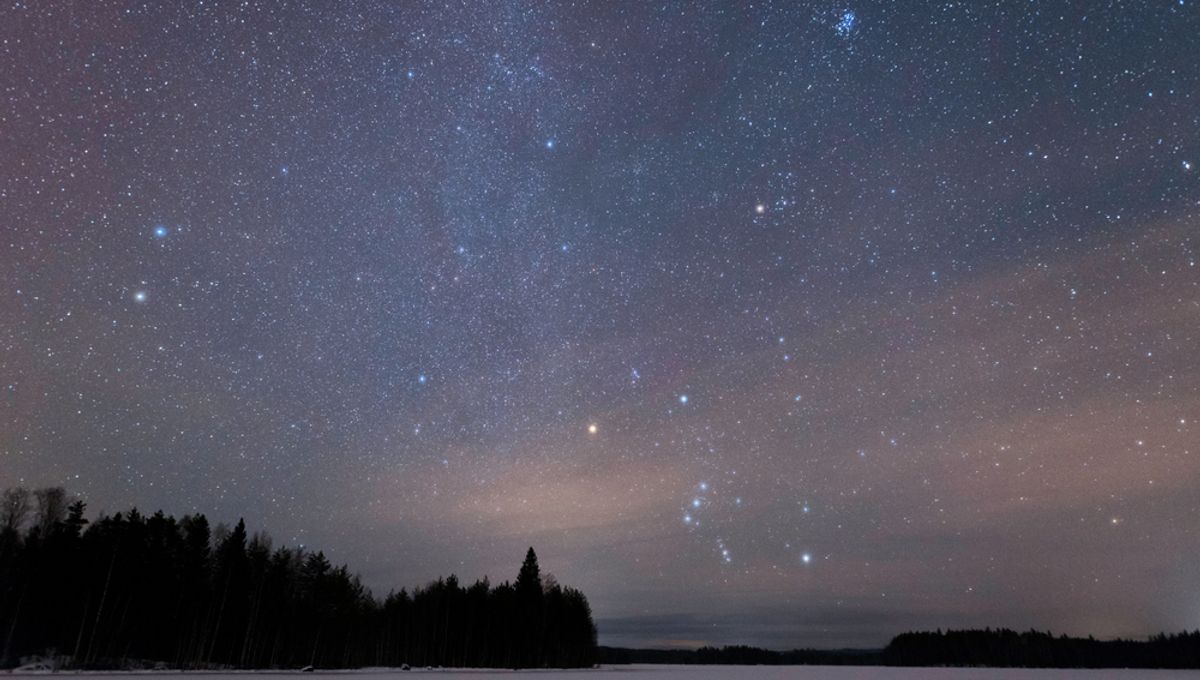
The life of stars is long and slow. Supernova explosions aside, we don’t usually get to observe much change over the course of human history, but exceptions exist. A new study reveals Betelgeuse, one of our best candidates for seeing a star go boom in the next 100,000 years, entered its current red phase so recently Ptolemy probably considered it yellow when he was marking the boundaries on which we still base constellations today 1900 years ago. Basically, that time frame for going boom just became a lot further away.
Red supergiants like Betelgeuse are the last phase in the life of a massive star. Stars become red giants when they have exhausted the hydrogen in their core and started fusing progressively heavier elements in a shell around a helium core. For a star as massive as Betelgeuse, this phase ends in a supernova explosion, with a sort of afterlife as a neutron star or a black hole. Although this is well known, identifying the timing of a star’s evolution to its current state is a different matter. Massive stars like Betelgeuse have much shorter lives than the Sun, let alone red dwarves, but they still live for millions of years.
However, a paper in Monthly Notices of the Royal Astronomical Society points out the ancients didn’t describe Betelgeuse as red. Around the time of Jesus, the Roman Scholar Hyingus referred to Betelgeuse as having a yellow-orange color similar to Saturn, which the authors consider evidence of how new its red supergiant phase is.
Not everyone sees the colors of faint lights the same way. Even today some people describe Betelgeuse as orangey-white. However, the paper refers to the Chinese court astronomer Sima Qian, writing about star colors a century before Hyingus. Qian described the star Sirius as representative of whiteness, Antares as red, Betelgeuse as yellow, and Bellatrix as blue. The description of Antares shows Qian could identify red stars, Betelgeuse just wasn’t one at the time.
“From these specifications, one can conclude that Betelgeuse at that time was in color between the blue-white Sirius and Bellatrix and the red Antares,” Professor Ralph Neuhäuser of the University of Jena said in a statement.
Other ancient sources, Ptolemy included, didn’t refer to Betelgeuse as a particular color, but notably failed to class it as part of a set with other deep red stars the way we do today. Even the names offer a clue. Antares is translated as “like Mars” or “the rival to Mars” because of its red color, but Betelgeuse got no such accolade, despite today being almost identical.
The Medieval era didn’t provide similarly useful records in Europe or elsewhere, but by the 16th century, Tycho Brahe described Betelgeuse as being redder than Aldebaran. Since the two supergiants are usually in the sky at the same time, they are easy to compare, and Brahe was perhaps the most observant pre-telescopic astronomer.
The finding tells us something about the famous star’s future. We know stars as massive as Betelgeuse (14 solar masses) spend about 1.5 million years as red supergiants before becoming supernovae. Events such as its 2019-20 dimming have sometimes sparked speculation Betelgeuse is gearing up to explode. Previous findings indicated it has at least 100,000 years before the Earth gets treated to a front-row seat to one of the universe’s most spectacular events.
If Neuhäuser and co-authors are right, however, we have almost the full 1.5 million years to wait – by which time our descendants may well have colonized planets even closer to the action (or we’ve wiped ourselves out).
“There are quite a number of astrophysical problems which can hardly be solved without historical observations,” Neuhäuser said.
The authors looked for historical reports of different colors in the 236 stars bright enough their shade can be detected with the naked eye, finding one other possibility. Wezen (delta Canis Majoris) is now distinctly yellow, but was described as white by ninth century Arabic scholars, a case the authors call “less compelling than Betelgeuse” although the change is plausible.
Source Link: Betelgeuse Was Yellow, Not Red, As Recently As Roman Times